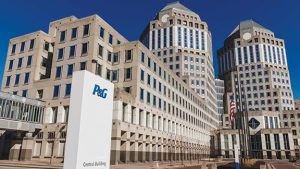Bloomberg
Procter & Gamble Co (P&G) sold fewer household staples than expected last quarter as consumers grew more cautious about higher prices.
The total volume of goods sold fell 6% in the three months ended in December, worse than the 2.6% that analysts had estimated. Chief Financial Officer Andre Schulten said consumers are using up the products in their pantries before restocking and they’re being more measured in their use of items such as paper towels. Even so, shoppers’ reaction to price hikes is “much more benign than we would’ve expected,†he said in an interview.
The pandemic boom that the maker of Tide detergent and Pampers diapers had experienced has faded. Volume fell in all categories, with P&G citing a “market contraction†for most, according to a statement.
Russia and China drove part of the volume declines, Schulten said. P&G scaled back its operations in Russia after that country invaded Ukraine, while Chinese pandemic restrictions hit retailers there.
A fresh round of price hikes allowed P&G to offset the decline in units sold and boost organic revenue by 5% in the quarter. That metric, which excludes factors such as currency fluctuations, surpassed analysts’ expectations but was still the slowest growth rate in more than a year.
The consumer-goods giant now expects organic sales growth between 4% and 5% in the fiscal year ending in June. That narrows the projection to the more optimistic half of its previous forecast, issued in October. P&G also increased the overall revenue outlook for the year.
The company also trimmed the expected impact of currency fluctuations as well as higher commodity and freight costs for the full year. It now expects a $3.7 billion hit, down from $3.9 billion, thanks in part to a weaker dollar. Still, P&G maintained its earnings per share outlook in a range of $5.81 to $6.04 for the current fiscal year.
Investors are closely watching consumer spending amid signs of a global economic pullback. US retail sales fell in December by the most in a year, adding to a drop the prior month, according to Commerce Department data. Factory output also slumped, exacerbating concerns that a recession is looming.
In a statement announcing the results, Chief Executive Officer Jon Moeller acknowledged the “very difficult cost and operating environment,†while adding that P&G’s actions have helped it to maintain growth despite the challenges.
Meanwhile, P&G’s business in China slumped 7% last quarter as cash-strapped retailers reduced their inventories amid Covid-19 curbs, Schulten said.
The Cincinnati-based company still sees the potential for growth in the mid-single digits in China — the firm’s second-largest market — as mobility normalises, though the timeline for a recovery is unclear.
China’s reopening sets up a stronger second half of the fiscal year for P&G, Bloomberg Intelligence analyst Deborah Aitken wrote.
Europe has shown a “higher and more pronounced reaction†to elevated prices than the US, Schulten said. In Russia, P&G is operating on a reduced footprint after cutting back on advertising and limiting its products to basic health, hygiene and personal-care items.
 The Gulf Time Newspaper One of the finest business newspapers in the UAE brought to you by our professional writers and editors.
The Gulf Time Newspaper One of the finest business newspapers in the UAE brought to you by our professional writers and editors.
